Allen Tiller's Blog, page 28
February 26, 2019
Lost Hotels: Crabb’s Old Accommodation House
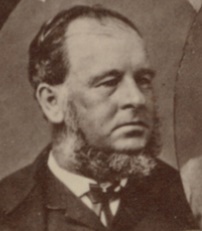 William Crabb - circa 1872Lost Hotels: Crabb’s Old Accommodation HouseBlanchetown in the 1850s was a Murray River Port that was nothing much more than a few tents and a couple of small cottages. In 1841, The Protector of Aborigines, Edward John Eyre established the first European settlement on the Murray River 6 kilometres south at a place called ‘Moorundie’. Moorundie was the name of the local indigenous people.
William Crabb - circa 1872Lost Hotels: Crabb’s Old Accommodation HouseBlanchetown in the 1850s was a Murray River Port that was nothing much more than a few tents and a couple of small cottages. In 1841, The Protector of Aborigines, Edward John Eyre established the first European settlement on the Murray River 6 kilometres south at a place called ‘Moorundie’. Moorundie was the name of the local indigenous people.Eyre’s site was subject to flooding, so another site further up the Murray was chosen to be surveyed for a township. In 1855, Governor Sir Richard Graves McDonnell named the new river port “Blanchetown” after his wife Lady Blanche McDonnell.
The first families in the region were the Brand family and Crabb family.
One of the first pastoral leases in the area was held by the Crabb family. The Crabb’s had emigrated to South Australia from Plymouth, Devon England on The Java. They arrived in Port Adelaide in 1840. They moved around South Australia to places like Angaston, Truro and North Rhyne, (now Keyneton) before settling in Blanchetown in the late 1850s.
The Crabb’s took to catching and taming wild horses in the area on Craig’s Plains below Accommodation Hill.
Being close to the Blanchetown port allowed the Crabb's to export their goods and profit from their land. The Crabb’s also ran sheep, cattle and their own horses, with their boys growing up to be well-known boundary riders and stockmen in the region.
William and his wife Mary Anne (nee Chinner) had nine children. In time, those children married and the family grew. There were 18 members of the Crabb family living in Blanchetown in the 1870s, which made up a significant portion of the population of the then tiny town.
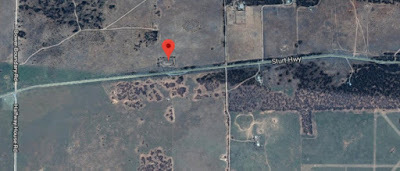 Crabb Reservoir - located halfway between Crabb's Old Accommodation House
Crabb Reservoir - located halfway between Crabb's Old Accommodation Houseand the Annadale Halfway House on the Sturt Highway.Blanchetown became a centre of activity, as a port, and as a crossing point of the river of the road to Sydney NSW. Wool and other commodities would come down the river via paddle steamer, then get loaded onto bullock drays to head further south to Adelaide.
The 1865 drought killed much of the Crabb’s cattle stock and their property had to be sold. William Crabb instead built the first hotel in the area, known locally as Crabb’s Halfway House, and later as Crabb’s Old Accommodation House, which was located on the track from Truro to Blanchetown (now the Sturt Highway). His hotel was first licenced in 1865 and almost closed a year later when Crabb was late with his application to the Magistrates board.
He appeared in person to plead his case and stated that; “I did not send in my application in time because I had made up my mind to leave the house, but was afterwards induced to apply for a renewal of the licence in consideration of the accommodation the house afforded the public. I have kept it eight years and have sunk a considerable amount of money there.”
His license was renewed by the board.
William Crabb ran his hotel until 1873 when he decided to shut up shop and sell off all the internal furnishings. He then invested in the nearby station Roonka Roonka, and Hampton station. This investment proved profitable for the Crabb’s, with William beginning trade in wool-buying and wool-scouring, which was earning him over 1000 pounds a year.
In 1881, Crabb’s Halfway-House is mentioned in many local newspapers as the nearest point to a
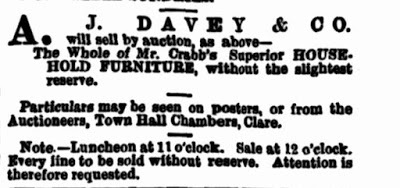 Newspaper advertisement for the sale of goods from Crabb's Hotelcliff fall of the banks of the Murray River. On the bend of the river nearby, A 250 feet section of the cliff face had come away from the ground around it via an explosion. Warnings were put in newspapers for steamboat Captains to avoid the fallen debris, and to avoid the large section of the cliff still dangling, ready to fall.
Newspaper advertisement for the sale of goods from Crabb's Hotelcliff fall of the banks of the Murray River. On the bend of the river nearby, A 250 feet section of the cliff face had come away from the ground around it via an explosion. Warnings were put in newspapers for steamboat Captains to avoid the fallen debris, and to avoid the large section of the cliff still dangling, ready to fall.William and Mary had rushed from their home upon hearing the explosion and watched a 1.5 metres (5 foot) high tsunami travel across the Murray River and submerge a small island in their view. After inspecting the cliff, they discovered one massive 12-metre-tall (40-foot) tree over 3 metres (12 feet) away from where its roots sat.
The Crabb’s rented out their former hotel for a short time before it fell into the ruins that remain today.
William and Mary Crabb are buried in a little cemetery not far from Blanchetown. In the same cemetery are the final resting places of James Brand, James Rossiter and his wife.
During the 1960s 165 skeletons of indigenous human remains were found in the sand dunes on the Roonka Roonka station property which led to an archaeological dig in the area. The oldest remains have been carbon dates as 8,000 to 7,000 years B.P (B.P. meaning “Before Present” 1950)
Researched and written by Allen Tiller © 2019
References
1866 'BENCH OF MAGISTRATES.', The Adelaide Express (SA: 1863 - 1866), 11 September, p. 5. , viewed 03 Jan 2019, http://nla.gov.au/nla.news-article207679872
1874 'COUNTRY CORRESPONDENCE.', South Australian Register (Adelaide, SA : 1839 - 1900), 5 January, p. 7. , viewed 03 Jan 2019, http://nla.gov.au/nla.news-article39814195
1881 'COUNTRY NEWS, COUNTRY LETTERS.', Adelaide Observer (SA: 1843 - 1904), 26 November, p. 37. , viewed 03 Jan 2019, http://nla.gov.au/nla.news-article160151381
1881 'LANDSLIP ON THE MURRAY.', Adelaide Observer (SA: 1843 - 1904), 12 March, p. 15. , viewed 03 Jan 2019, http://nla.gov.au/nla.news-article160142338
1881 'SANDLETON, November 16.', South Australian Register (Adelaide, SA: 1839 - 1900), 22 November, p. 2. (Supplement to the South Australian Register.), viewed 03 Jan 2019, http://nla.gov.au/nla.news-article47087005
1884 'ANNA. JUNE 23.', South Australian Register (Adelaide, SA: 1839 - 1900), 26 June, p. 3. , viewed 03 Jan 2019, http://nla.gov.au/nla.news-article43661923
1894 'No title', The Laura Standard (SA: 1889 - 1917), 23 November, p. 2. , viewed 03 Jan 2019, http://nla.gov.au/nla.news-article191007579
1903 'OBITUARY.', Chronicle (Adelaide, SA: 1895 - 1954), 3 October, p. 35. , viewed 03 Jan 2019, http://nla.gov.au/nla.news-article878...
1939 'Blanchetown in the Seventies', Murray Pioneer and Australian River Record (Renmark, SA: 1913 - 1942), 14 December, p. 12. , viewed 03 Jan 2019, http://nla.gov.au/nla.news-article109250178
Leadbeater B (1996) South Australian Shipping & Immigration, Family History SA, retrieved from http://www.familyhistorysa.info/shipping/passengerlists.html
Prokopec, Miroslav & L Pretty, Graeme & Smith, Patricia. (1994). Australian aboriginals: prehistoric South. Variab Evol. 4.
Published on February 26, 2019 01:00
February 18, 2019
A Haunting at The Blumberg Hotel – Birdwood
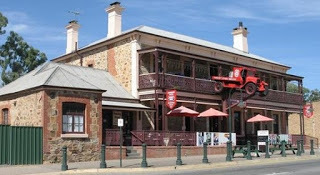
A Haunting at The Blumberg Hotel – Birdwood
Birdwood, home to the National Motor Museum, was once known as Blumberg, but due to anti-German sentiment during World War One, it and many other South Australian towns had their names.
The name Birdwood comes from Sir William Birdwood who commanded ANZACS at Gallipoli.
The Blumberg Hotel originally opened as the Napoleon Bonaparte Hotel in 1865.
The hotel is thought to be haunted by a little girl dubbed “Emily”. It is believed Emily fell down the stairs and broke her neck. Emily is said to cause all kinds of mischief around the hotel, stealing salt and pepper shakers, turning on and off lights, and causing cold spots and cold draughts throughout the pub.
A former publican of the hotel also claimed that Emily the ghost would sit with her children and watch TV and would sometimes move chairs around in their presence.
Another spirit said to haunt the hotel is an adult that appears in the form of a shadow. One witness claim that the ghost walked through him. Others claim that at times the smell of death wafts through the hotel. On other occasions, it is the smell of incense, even though none has been lit.
Researched and written by Allen Tiller © 2019
References:
Chirp Internet. 2016. Hotels in Birdwood < South Australia | Gday Pubs - Enjoy our Great Australian Pubs. [ONLINE] Available at http://www.gdaypubs.com.au/SA/birdwood.html. [Accessed 12 September 2016].
1871 'Family Notices', South Australian Register (Adelaide, SA: 1839 - 1900), 20 May, p. 8. (Supplement to the South Australia Register.), viewed 02 Jan 2019, http://nla.gov.au/nla.news-article39246196
1907 'OBITUARY.', The Mount Barker Courier and Onkaparinga and Gumeracha Advertiser (SA: 1880 - 1954), 13 September, p. 2. , viewed 02 Jan 2019, http://nla.gov.au/nla.news-article147866222
Published on February 18, 2019 23:44
February 12, 2019
Ghost of Glenloth Well Mine
Ghost of Glenloth Well Mine
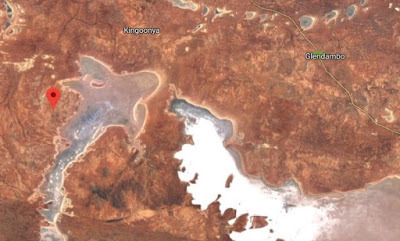
Located on the Eyre Peninsula, Glenloth Well is approximately an hour and fifteen minutes south-west of Kingoonya near Lake Harry. Glenloth Well is home to the Glenloth Goldfields, a natural deposit of Gold and Hematite that was noted by the Government Geologist in 1893.
By 1904, a mine and extraction building was constructed. A five-stamp battery mill (a type of machine that crushes rocks instead of grinding them) was built, powered by a 14-horse powered engine with a vertical boiler, drawing water from Lake Harry.
A small settlement was established to process the mine. The closest towns today are Kingoonya (32kms north-east), Glendambo population 77 (74 km's east), Tarcoola (87 Kms north-west).In 1936, a daughter of an owner of the East-West Mine at Glenloth Goldfields, Yvonne Marie Heylen, wrote to The Mail newspaper, telling of a local ghost story.
Her article is as follows:“Last week one of the old miners who was working as a tributer on our mine told father that there was a ghost down one of the old underlie tunnels, near where he was working. He said he could hear weird noises and sounds of running feet at night.
Next night be took his carbide lamp and crawled along the old abandoned tunnel or 90 ft. when suddenly his lamp went out. In the darkness, two yellow eyes of fire appeared before him, and the next instant' he received a heavy blow on the head from the ghost. Scrambling along on hands and knees, the poor miner came out of the tunnel as fast as he could and gave the alarm.Father and one of my brothers took candles and ropes and went to investigate. They discovered that the ghost was Billie our billygoat, who had been missing for several days.Billie was soon rescued and taken out of the tunnel.
Yvonne Marie Heylen. Glenloth Goldfield.”
While in this case, it turned out to be a goat and not a ghost haunting the old mine-shaft, the moral of the story here is; don’t crawl into deep dark places on your own, you never know what you might find!
Researched and written by Allen Tiller © 2018
The Haunts of Adelaide: History, Mystery and the Paranormal.
References:
1901 'IN SOUTH AUSTRALIA. FIND OF GOLD AT GLENLOTH WELL.', The Register (Adelaide, SA: 1901 - 1929), 26 April, p. 7. , viewed 27 Dec 2018, http://nla.gov.au/nla.news-article560... 'The Ghost in the Mine', The Mail (Adelaide, SA: 1912 - 1954), 14 November, p. 7. (MAGAZINE), viewed 26 Dec 2018, http://nla.gov.au/nla.news-article55732930
Gee, L.C.E. & Brown, H.Y.L., (1908), Record of The Mines of South Australia, 4th ed., Government Printer, Adelaide, South Australia.
Record of Mines, (1980), Summary card No:8, Gairdner S 5315/Harris
Noble R.J., Just J. and Johnson J. E., (1983), Catalogue of South Australian Minerals-1983, Government Printer, Adelaide, South Australia

Located on the Eyre Peninsula, Glenloth Well is approximately an hour and fifteen minutes south-west of Kingoonya near Lake Harry. Glenloth Well is home to the Glenloth Goldfields, a natural deposit of Gold and Hematite that was noted by the Government Geologist in 1893.
By 1904, a mine and extraction building was constructed. A five-stamp battery mill (a type of machine that crushes rocks instead of grinding them) was built, powered by a 14-horse powered engine with a vertical boiler, drawing water from Lake Harry.
A small settlement was established to process the mine. The closest towns today are Kingoonya (32kms north-east), Glendambo population 77 (74 km's east), Tarcoola (87 Kms north-west).In 1936, a daughter of an owner of the East-West Mine at Glenloth Goldfields, Yvonne Marie Heylen, wrote to The Mail newspaper, telling of a local ghost story.
Her article is as follows:“Last week one of the old miners who was working as a tributer on our mine told father that there was a ghost down one of the old underlie tunnels, near where he was working. He said he could hear weird noises and sounds of running feet at night.
Next night be took his carbide lamp and crawled along the old abandoned tunnel or 90 ft. when suddenly his lamp went out. In the darkness, two yellow eyes of fire appeared before him, and the next instant' he received a heavy blow on the head from the ghost. Scrambling along on hands and knees, the poor miner came out of the tunnel as fast as he could and gave the alarm.Father and one of my brothers took candles and ropes and went to investigate. They discovered that the ghost was Billie our billygoat, who had been missing for several days.Billie was soon rescued and taken out of the tunnel.
Yvonne Marie Heylen. Glenloth Goldfield.”
While in this case, it turned out to be a goat and not a ghost haunting the old mine-shaft, the moral of the story here is; don’t crawl into deep dark places on your own, you never know what you might find!
Researched and written by Allen Tiller © 2018
The Haunts of Adelaide: History, Mystery and the Paranormal.
References:
1901 'IN SOUTH AUSTRALIA. FIND OF GOLD AT GLENLOTH WELL.', The Register (Adelaide, SA: 1901 - 1929), 26 April, p. 7. , viewed 27 Dec 2018, http://nla.gov.au/nla.news-article560... 'The Ghost in the Mine', The Mail (Adelaide, SA: 1912 - 1954), 14 November, p. 7. (MAGAZINE), viewed 26 Dec 2018, http://nla.gov.au/nla.news-article55732930
Gee, L.C.E. & Brown, H.Y.L., (1908), Record of The Mines of South Australia, 4th ed., Government Printer, Adelaide, South Australia.
Record of Mines, (1980), Summary card No:8, Gairdner S 5315/Harris
Noble R.J., Just J. and Johnson J. E., (1983), Catalogue of South Australian Minerals-1983, Government Printer, Adelaide, South Australia
Published on February 12, 2019 00:12
February 5, 2019
UFO’s over Port Augusta
UFO’s over Port Augusta
 Railway yards at Port Augusta, South Australia 1914 SLSA:[PRG 280/1/14/43]
Railway yards at Port Augusta, South Australia 1914 SLSA:[PRG 280/1/14/43]Railway workers in Port Augusta witnessed five objects, described as “white or light pink, and shaped like an egg” fly in formation at great speed, through the sky on Wednesday the 6th of February 1947.
Ron Ellis, an ex RAAF employee was working in the train yards when he spotted the strange sight flying through the sky. Owing to his previous work in the air force, he was able to rule out aircraft of the day as being the culprits. His estimation of the size of the object was that each would have been the size of a locomotive!
Ellis also stated that the objects cast shadows, so could not have been an optical illusion.
Ellis was not the only witness, with other railways workers coming forward with their own sightings of the phenomenon. It was speculated that the objects were at of height of about 6000 feet, they moved erratically, and seemed to ‘pulse’. The objects moved extremely quickly through the sky, being out of sight in just a few seconds.
Further weight was added to the men’s story when Government Astronomer, Mr G.F. Dodwell, stated that the witnessed phenomena did not fit with any known astronomical events, and was most likely not a meteor. A meteorite, according to Dodwell, would have travelled at great speed, would not cast a shadow, being as they are very small, and would also create a deafening roar, Witnesses of the phenomena did not report any sounds associated with the objects.
The Port Augusta UFO incident predates the July 1947 UFO incident at Roswell, New Mexico that would eventually lead to the pop-culture phenomenon that took over American of flying saucers and little green men!
Researched and written by Allen Tiller © 2018
References:
1947 'C.R. Workmen See Phenomenon', Transcontinental (Port Augusta, SA: 1914 - 1954), 7 February, p. 1. , viewed 28 Dec 2018, http://nla.gov.au/nla.news-article168306418
1947 'Objects in Sky Not Meteorites', Quorn Mercury (SA: 1895 - 1954), 13 February, p. 3. , viewed 28 Dec 2018, http://nla.gov.au/nla.news-article213698389
1947 'Objects in Sky Not Meteorites', Transcontinental (Port Augusta, SA: 1914 - 1954), 14 February, p. 1. , viewed 28 Dec 2018, http://nla.gov.au/nla.news-article168306511
1947 'Objects In Sky Not. Meteorites', The Advertiser (Adelaide, SA: 1931 - 1954), 8 February, p. 1. , viewed 28 Dec 2018, http://nla.gov.au/nla.news-article30511359
1947 'SEEING THINGS', The Advertiser (Adelaide, SA: 1931 - 1954), 10 July, p. 2. , viewed 28 Dec 2018, http://nla.gov.au/nla.news-article359...
1947 'Strange Objects In Sky', Chronicle (Adelaide, SA: 1895 - 1954), 13 February, p. 6. , viewed 28 Dec 2018, http://nla.gov.au/nla.news-article93346874
1947 'Strange Objects Reported In Sky', The Advertiser (Adelaide, SA: 1931 - 1954), 7 February, p. 1. , viewed 28 Dec 2018, http://nla.gov.au/nla.news-article30511159
SLSA: Railway yards at Port Augusta, South Australia [PRG 280/1/14/43] • Photograph retrieved from https://collections.slsa.sa.gov.au/re...
Published on February 05, 2019 01:00
January 29, 2019
Pearce Family Murder’s: Part II: The Murders
Pearce Family Murder’s: Part II: The Murders
On Saturday the 5th of January 1991, Stuart Pearce drove from his home at Jackson street Parafield Gardens to his job at the Wingfield BP petrol station.
His usual routine was to wake up at about 10pm, have a shower and a meal, then drive his Datsun 240K for about 15 minutes to Wingfield to start his shift at midnight.
An hour before his waking up, at 9pm, Meredith Pearce had spoken to her sister on the phone and made no indication that anything was wrong, or that she was under threat.
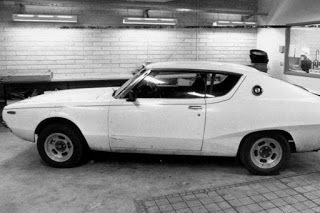 Datsun car found abandoned
Datsun car found abandoned
at Kilkenny Shopping Centre
believed to belong to murder suspect
missing person Stuart Pearce Jan 1991.The next morning, on Sunday the 6th of January 1991, Metropolitan Fire Service was called to the Jackson Street house of the Pearce family to find it ablaze. The fire had been reported at 7:17am. Stuart Pearce’s nightshift ended at 6:50am.
Pearce’s distinctive white 240K Datsun coupe was found dumped at a Kilkenny shopping centre. His wife, Meredith’s blood was found in the boot of the car and on a door trim. Police believe that her blood was most likely transferred to the car from Pearce.
Meredith Pearce was found in her bedroom tied to a chair, she had a towel stuffed in her mouth, and was strangled with an electrical cord. The media reported that Adam and Travis had also been tied to chairs and had been asphyxiated by having plastic bags cover their heads. 2-year-old Kerry was reported to have been smothered to death. Autopsies revealed the family had died before the fire had been lit.
A Police search of the property during their investigation revealed that Stuart Pearce’s .303 rifle was missing. It also uncovered a bunker, which was being used to conceal a drug crop of 25 marijuana plants. Police speculated that Pearce murdered his family before going to work. During their investigations, it was revealed that gas bottles had been set around the house on the night prior to the fire, but these failed to explode. Police suspect that Pearce returned home after his night shift and used other accelerants around the house to set the fire, before fleeing to dump his car.
Stuart Pearce remains the most likely suspect in the murder of his family. Over the years, the only survivor, Matthew, who lost his entire family in one night, has been interviewed by police. He denies having any knowledge of his father’s whereabouts.
Matthew told The Advertiser newspaper, in 2002 that he believed his father was innocent, and that he thought the murderer had been trying to get information from his mother.
Matthew, in 2004 was charged and sentenced to gaol for criminal trespass after being found in the ceiling of a toy shop, where he said he had been hiding for four hours, as he believed the murderers of his family would come after him next.
Police are still searching for Stuart Pearce.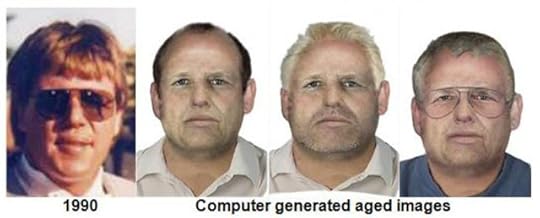 Computer generated likeness of what Stuart Pearce may look like now.
Computer generated likeness of what Stuart Pearce may look like now.
A reward of up to $1 million dollars has been offered for information leading to the apprehension and/or conviction of the person, or people, responsible for the suspected murders.
Anyone with information about the case is asked to call Crime Stoppers on 1800 333 000 or report online at https://crimestopperssa.com.au/ - Callers can remain anonymous.
Researched and written by Allen Tiller © 2018.
The Haunts of Adelaide: https://www.facebook.com/TheHauntsOfA...
References:ABC News (2014) SA most wanted Stuart Pearce: Computer generated images released, retrieved from https://www.abc.net.au/news/2014-09-05/computer-generated-images-of-sas-most-wanted/5722366 Crime Stoppers South Australia. (2018). PEARCE FAMILY. Retrieved from https://crimestopperssa.com.au/case/p...
Hunt, N. (2015, February 28). The cold case files – unsolved SA murders reopened. The Advertiser. Retrieved from http://www.adelaidenow.com.au/news/so...
Hunt, N. (2016, October 1). Police release new details, photos in 1991 Pearce family killings. The Advertiser. Retrieved from http://www.adelaidenow.com.au/news/south-australia/police-release-new-details-photos-in-1991-pearce-family-killings/news-story/8718ddfe90cc563037bdcce8bb769d62
SBS News (2016, 2 October), Renewed search for SA murder fugitive, Retrieved from; https://www.sbs.com.au/news/renewed-s...
Seidel, N, (2013), Family killers strike most often in summer holidays, UK study shows News Corp Australia Network, retrieved from https://www.heraldsun.com.au/news/law...
On Saturday the 5th of January 1991, Stuart Pearce drove from his home at Jackson street Parafield Gardens to his job at the Wingfield BP petrol station.
His usual routine was to wake up at about 10pm, have a shower and a meal, then drive his Datsun 240K for about 15 minutes to Wingfield to start his shift at midnight.
An hour before his waking up, at 9pm, Meredith Pearce had spoken to her sister on the phone and made no indication that anything was wrong, or that she was under threat.
 Datsun car found abandoned
Datsun car found abandoned at Kilkenny Shopping Centre
believed to belong to murder suspect
missing person Stuart Pearce Jan 1991.The next morning, on Sunday the 6th of January 1991, Metropolitan Fire Service was called to the Jackson Street house of the Pearce family to find it ablaze. The fire had been reported at 7:17am. Stuart Pearce’s nightshift ended at 6:50am.
Pearce’s distinctive white 240K Datsun coupe was found dumped at a Kilkenny shopping centre. His wife, Meredith’s blood was found in the boot of the car and on a door trim. Police believe that her blood was most likely transferred to the car from Pearce.
Meredith Pearce was found in her bedroom tied to a chair, she had a towel stuffed in her mouth, and was strangled with an electrical cord. The media reported that Adam and Travis had also been tied to chairs and had been asphyxiated by having plastic bags cover their heads. 2-year-old Kerry was reported to have been smothered to death. Autopsies revealed the family had died before the fire had been lit.
A Police search of the property during their investigation revealed that Stuart Pearce’s .303 rifle was missing. It also uncovered a bunker, which was being used to conceal a drug crop of 25 marijuana plants. Police speculated that Pearce murdered his family before going to work. During their investigations, it was revealed that gas bottles had been set around the house on the night prior to the fire, but these failed to explode. Police suspect that Pearce returned home after his night shift and used other accelerants around the house to set the fire, before fleeing to dump his car.
Stuart Pearce remains the most likely suspect in the murder of his family. Over the years, the only survivor, Matthew, who lost his entire family in one night, has been interviewed by police. He denies having any knowledge of his father’s whereabouts.
Matthew told The Advertiser newspaper, in 2002 that he believed his father was innocent, and that he thought the murderer had been trying to get information from his mother.
Matthew, in 2004 was charged and sentenced to gaol for criminal trespass after being found in the ceiling of a toy shop, where he said he had been hiding for four hours, as he believed the murderers of his family would come after him next.
Police are still searching for Stuart Pearce.
 Computer generated likeness of what Stuart Pearce may look like now.
Computer generated likeness of what Stuart Pearce may look like now.A reward of up to $1 million dollars has been offered for information leading to the apprehension and/or conviction of the person, or people, responsible for the suspected murders.
Anyone with information about the case is asked to call Crime Stoppers on 1800 333 000 or report online at https://crimestopperssa.com.au/ - Callers can remain anonymous.
Researched and written by Allen Tiller © 2018.
The Haunts of Adelaide: https://www.facebook.com/TheHauntsOfA...
References:ABC News (2014) SA most wanted Stuart Pearce: Computer generated images released, retrieved from https://www.abc.net.au/news/2014-09-05/computer-generated-images-of-sas-most-wanted/5722366 Crime Stoppers South Australia. (2018). PEARCE FAMILY. Retrieved from https://crimestopperssa.com.au/case/p...
Hunt, N. (2015, February 28). The cold case files – unsolved SA murders reopened. The Advertiser. Retrieved from http://www.adelaidenow.com.au/news/so...
Hunt, N. (2016, October 1). Police release new details, photos in 1991 Pearce family killings. The Advertiser. Retrieved from http://www.adelaidenow.com.au/news/south-australia/police-release-new-details-photos-in-1991-pearce-family-killings/news-story/8718ddfe90cc563037bdcce8bb769d62
SBS News (2016, 2 October), Renewed search for SA murder fugitive, Retrieved from; https://www.sbs.com.au/news/renewed-s...
Seidel, N, (2013), Family killers strike most often in summer holidays, UK study shows News Corp Australia Network, retrieved from https://www.heraldsun.com.au/news/law...
Published on January 29, 2019 01:00
January 22, 2019
Pearce Family Murder’s: Part I: The Hunt for Stuart Pearce.
Pearce Family Murder’s: Part I: The Hunt for Stuart Pearce.
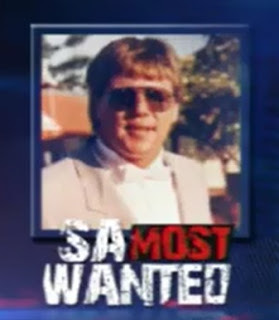
Saturday the 5th of January 1990 was the last time Meredith Pearce talked to her sister on the phone, the next morning she would be dead.
On Sunday morning the 6th of January 1991, the Metropolitan fire service was called to a home on Jackson Street, Parafield Gardens. The home was well ablaze, and after being extinguished, inside was found the body of Meredith Pearce (31) and three of her four children, Adam (11), Travis (9) and Kerry (2), missing from the house fire were Meredith’s husband, Stuart, and another son, Matthew (8).
Matthew, it was later found, had spent the night before sleeping over at a friend’s house. Stuart Pearce, however, could not, and still to this day, be found and remains the prime suspect in the murder of the family.
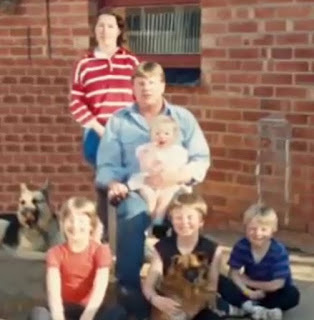 The Pearce family - circa 1990Since the murders took place, numerous sightings of Stuart Pearce were reported across the world. Police investigated each one, with all being false identifications, and the suspects involved being able to prove who they really are.
The Pearce family - circa 1990Since the murders took place, numerous sightings of Stuart Pearce were reported across the world. Police investigated each one, with all being false identifications, and the suspects involved being able to prove who they really are.
A man fitting Pearce’s description, wearing a beige coloured uniform with the BP logo on it was seen in a Port Augusta shop on the day of the murders being reported.
Other unconfirmed sightings took place at Ceduna and at Madura in Western Australia.
A month after the murders, another unconfirmed sighting of Pearce took place at Portland, Victoria.
In late 1991, Pearce was sighted in Mount Gambier. Police thought he may have been sheltered by friends in the area, but Pearce alluded police capture.
Pearce was reportedly sighted in June 1996, at a Knox shopping centre in Melbourne, but this sighting remains inconclusive with no images of the person offered to police.
Detective Sergeant Sharpe said of the hunt for Stuart Pearce in a 2016 interview: “It would be very difficult for someone to live off the grid for this length of time – we have his fingerprints plus a DNA profile and he’s the subject of an Interpol red notice, but he hasn’t come to our attention.
Pearce is 177cm’s tall and has blue eyes. At the time of the murders, he had two distinctive tattoos. One tattoo was a Maltese Cross with a red and green rose over it on his lower left leg, and on his upper right arm, he had a tattoo of a naked woman with a rose on her back.
Stuart Pearce remains the prime suspect in the murders.
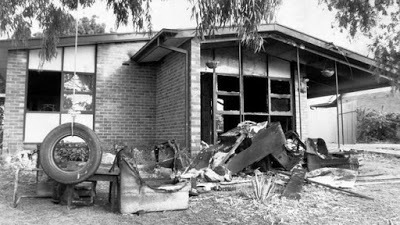 The Pearce family home at Parafield Gardens
The Pearce family home at Parafield Gardens
A reward of up to $1 million dollars has been offered for information leading to the apprehension and/or conviction of the person, or people, responsible for the suspected murders.
Anyone with information about the case is asked to call Crime Stoppers on 1800 333 000 or report online at https://crimestopperssa.com.au/ - Callers can remain anonymous.
Next Week: Pearce Family Murder’s: Part II: The Murders
Researched and written by Allen Tiller © 2018.
(References published in the final post.)
The Haunts of Adelaide: https://www.facebook.com/TheHauntsOfA...

Saturday the 5th of January 1990 was the last time Meredith Pearce talked to her sister on the phone, the next morning she would be dead.
On Sunday morning the 6th of January 1991, the Metropolitan fire service was called to a home on Jackson Street, Parafield Gardens. The home was well ablaze, and after being extinguished, inside was found the body of Meredith Pearce (31) and three of her four children, Adam (11), Travis (9) and Kerry (2), missing from the house fire were Meredith’s husband, Stuart, and another son, Matthew (8).
Matthew, it was later found, had spent the night before sleeping over at a friend’s house. Stuart Pearce, however, could not, and still to this day, be found and remains the prime suspect in the murder of the family.
 The Pearce family - circa 1990Since the murders took place, numerous sightings of Stuart Pearce were reported across the world. Police investigated each one, with all being false identifications, and the suspects involved being able to prove who they really are.
The Pearce family - circa 1990Since the murders took place, numerous sightings of Stuart Pearce were reported across the world. Police investigated each one, with all being false identifications, and the suspects involved being able to prove who they really are. A man fitting Pearce’s description, wearing a beige coloured uniform with the BP logo on it was seen in a Port Augusta shop on the day of the murders being reported.
Other unconfirmed sightings took place at Ceduna and at Madura in Western Australia.
A month after the murders, another unconfirmed sighting of Pearce took place at Portland, Victoria.
In late 1991, Pearce was sighted in Mount Gambier. Police thought he may have been sheltered by friends in the area, but Pearce alluded police capture.
Pearce was reportedly sighted in June 1996, at a Knox shopping centre in Melbourne, but this sighting remains inconclusive with no images of the person offered to police.
Detective Sergeant Sharpe said of the hunt for Stuart Pearce in a 2016 interview: “It would be very difficult for someone to live off the grid for this length of time – we have his fingerprints plus a DNA profile and he’s the subject of an Interpol red notice, but he hasn’t come to our attention.
Pearce is 177cm’s tall and has blue eyes. At the time of the murders, he had two distinctive tattoos. One tattoo was a Maltese Cross with a red and green rose over it on his lower left leg, and on his upper right arm, he had a tattoo of a naked woman with a rose on her back.
Stuart Pearce remains the prime suspect in the murders.
 The Pearce family home at Parafield Gardens
The Pearce family home at Parafield Gardens A reward of up to $1 million dollars has been offered for information leading to the apprehension and/or conviction of the person, or people, responsible for the suspected murders.
Anyone with information about the case is asked to call Crime Stoppers on 1800 333 000 or report online at https://crimestopperssa.com.au/ - Callers can remain anonymous.
Next Week: Pearce Family Murder’s: Part II: The Murders
Researched and written by Allen Tiller © 2018.
(References published in the final post.)
The Haunts of Adelaide: https://www.facebook.com/TheHauntsOfA...
Published on January 22, 2019 01:00
January 15, 2019
The Ghost in the Striped Bikini: Elizabeth Downs
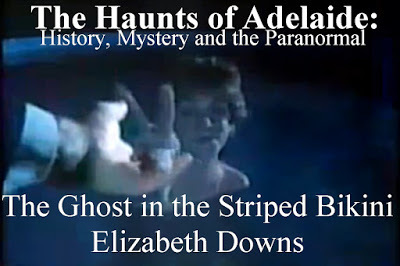
The Ghost in the Striped Bikini: Elizabeth Downs
She came up from under the water, a beautiful brunette, wearing a striped bikini. With a cheeky grin and a twinkle in her eye, she reached out her hand suggestively, ‘help me out of here, and I am yours’, her eyes said. He reached for her, but as he did, she vanished…
Di Klose, a self-described psychic began experiencing a haunting that would travel with her through distance and time. It all began in 1973 when Di moved into a home in Elizabeth Downs with her husband Ken.
Inexplicable events began to occur. Cold chills that pierced the warm summer air. Wet spots of stale smelling water would form on the floor and walls. the water was tested and found to be human urine. Objects began to disappear and reappear in new places. The sound of footsteps walking through the house, when the couple knew no one else was inside, echoed throughout the night and day. Guests to the house soon began to make claims of seeing a woman sitting in the living room, wearing a striped bikini. But neither Di nor Ken had seen her anywhere in their home, so played it down as overactive imaginations, that was until two plumbers who had come to find the source of the wet patches also witnessed the bikini wearing woman, and left the house, stating they would never return, and that the Klose’s should never call them again!
In the next few months, 19 people would witness the young woman in the Klose home. Some would never return to visit. During a party, one man witnessed the bikini-wearing girl inside the living room and asked Di who she was. Di responded that there is no-one dressed like that at the party and laughed him off as being drunk. The man went outside, where he witnessed the girl swimming in the pool. He walked over to her as she signalled to him to help her out of the water, but she vanished as he touched her hand.
A few nights later, Di was woken abruptly by the sense someone was trying to choke her, but no-one was physically present. Di spoke in her mind to the spirit she suspected was trying to make contact and asked it to leave her alone. A loud tarrying scream pierced the air not long after, coming from the bedroom of Di’s son, she sprinted into the room, to find no one in there but her son, sound asleep, just like he husband in her bedroom, the loud, disturbing sound not rousing either of them. In the coming weeks, Di and spirit ‘Celia’ started to make contact with each other and became friends. Di claimed that Celia soon began to work as a kind of ‘spirit guide’, helping with Di’s psychic readings.
Celia soon offered Di a glimpse of what had happened to her. She explained to Di that she had been living in the house with her boyfriend. The boyfriend had shot her, buried her in the backyard, and laid a slab of concrete over her so she would never be found, he then fled interstate.
Celia claimed to have been into black magic, and this was the reason she, as spirit, had stayed on in the house.
There have been claims made in the media that there is a small possibility that Celia could have been a murder victim of Christopher Worrall, one of the Truro murderers, who would have been 19 at the time, and bragged he had killed girls in SA starting around his 18th year, but this remains speculation.
Interestingly, Radio 5KA broadcast an episode directly from the house (and no I do not know the address) and had several ghostly goings on happen, such as pictures flying off the walls, during the broadcast. I have been searching for a copy of this recording, so if you know of someone with a copy, please ask them to get in touch with me through the Haunts of Adelaide page on facebook. Below is a video from a 1980’s Australian television show where Di Klose was interviewed about the haunting!
Watch the Video: https://www.youtube.com/watch?v=wEyq3...
Researched and written by Allen Tiller © 2019
Published on January 15, 2019 01:00
January 8, 2019
An Influx of South Australian UFO Sightings in January 1954
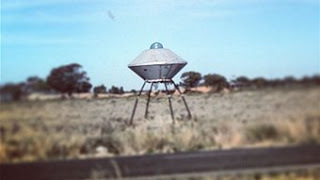
An Influx of South Australian UFO Sightings in January 1954
Port Road, Hindmarsh, January 8th January 1954. Delicatessen owners, the Hornby family, witnessed a flying saucer, fly across the northern sky.
Witness, Mr W.J. Hornby, stated; “Suddenly my son John shouted that he had seen a flying saucer flash from west to east.”
He added; “ We didn't believe him and were discussing it when 10 minutes later the object reappeared, this time flying from east to west.”
The object was described as “crescent-shaped and coloured orange.”[1]
On the same evening, (Jan. 8) at about 9pm, Mr C.C. Vonow of Ormonde Avenue, Colonel Light Gardens reported seeing a glowing parachute shaped object moving very slowly southwards as he and a companion were driving down Waymouth street in the Adelaide.
Three UFO sightings were reported on January 9th. 15 Kilometres from Morgan in the Riverland, Captain W. Booth, piloting a DC3 for Guinea Airways, reported a strange object in the sky. No other aircraft were reported in the immediate vicinity. The object appeared to dart constantly across the pilot's line of flight.
On the same evening, Mr and Mrs Sherek of Seaview Road, Kirkcaldy (now Henley Beach) witnessed a bright “planet-like” object moving from left to right on the horizon from 2:20am, for about 45 minutes. The object moved vertically sideways about 15 degrees above the western horizon.
A banana-shaped UFO with flashing lights down its side was witnessed just before midnight on Thursday the 14th of January 1954. Witness, Mr C.D. Dallow of Strathmore Street, Ferryden Park saw the object flying at “terrific speed” from the Adelaide Hills, near Magill, westward toward, then over St Vincent Gulf.[2]
Mr Darrow was quoted as saying in The News; “I was looking at the sky for any sign of a weather change when I noticed the object. It was visible for seven to eight seconds, then it appeared to dip down, then rise again, before moving along the horizon towards the sea.”[3]
A report was made to the Flying Saucer Investigation Committee, which was one of many UFO investigation groups in 1954. As previously reported on this blog, A UFO was also seen over Gawler in 1954 (read about it here: https://hauntedadelaide.blogspot.com/2014/11/gawler-flying-saucer.html)
On January 12th, two separate witnesses both reported seeing an object streaking across the sky at 10am in the morning, leaving behind it a trail of white smoke over the Burra region.
Two days later, on the 14th of January, Mallala Fire Brigade Officer, Mr C.W. Huxtable witnessed a shiny silver object at 11:25am, moving horizontally across the sky, it suddenly shot upwards at high speed and disappeared from sight!
Also, in January 1954, a UFO was sighted on the 24th of January by three male witnesses. The witnesses reported seeing an unusual object in the north-eastern sky shaped like a diamond, that was shining what appeared to be a searchlight, which was scanning the ground for a few minutes before it eventually faded away.
The men claimed emphatically that the light was not a star or other “heavenly body”, nor could it have been an aircraft due to the terrific speed it was travelling.[4]
Have you witnessed a UFO over South Australia? Let us know on the Haunts of Adelaide Facebook page: https://www.facebook.com/TheHauntsOfAdelaide/
Researched and written by Allen Tiller © 2019
[1] 1954 'Suburban Family See Flying Saucer', The Advertiser (Adelaide, SA: 1931 - 1954), 9 January, p. 3., viewed 15 Sep 2018, http://nla.gov.au/nla.news-article475...
[2] 1954 'FLYING SAUCERS IN THE SA AIR', The Mail (Adelaide, SA: 1912 - 1954), 16 January, p. 8., viewed 15 Sep 2018, http://nla.gov.au/nla.news-article580...
[3] 1954 'Now it's a flying banana?', News (Adelaide, SA: 1923 - 1954), 15 January, p. 26., viewed 15 Sep 2018, http://nla.gov.au/nla.news-article134...
[4] 1954 'Unusual Object in Sky', Quorn Mercury (SA: 1895 - 1954), 28 January, p. 1. , viewed 15 Sep 2018, http://nla.gov.au/nla.news-article213...
Published on January 08, 2019 01:00
December 31, 2018
Can Ghosts Cast Shadows?
Can Ghosts Cast Shadows?

Ghosts, thought by some to be the spirits of the dead, are allegedly seen across the world, in almost all cultures. Some witnesses’ report being terrified of apparitions, whilst others have experiences of euphoria, calmness or life-changing spiritual interaction.
Usually, spirits are reported as either looking very solid, and similar to a person known to the observer, or they are various shades of colour (white, grey, green, blue or red), see-through (in various shades of colour), or black, sometimes with the description of a black so dark, even in the night the spirit appears blacker than its surrounds.
One thing not usually reported, most likely as the observer is in fight or flight mode, is if the spirit is casting a shadow. Speculation that is widely held in the paranormal community is that spirits don’t cast shadows, as they are see-through objects, and therefore, a shadow won’t be seen, but is this really true, as many see through objects cast shadows?
If one were to witness a physical apparition of a spirit, one would believe that the spirit is operating in our physical world, and therefore some basic principles of physics would therefore apply.
On the other hand, if spirits are purely a mental projection or hallucination, that we perceive through our “mind's eye”, then physical world limitations would (and should) not apply.
Therefore, if we take than an apparition appears to us in the physical world, then it must be made of basic building blocks of some kind, chemicals, or the smallest building block, atoms.
So, do Atoms cast a shadow? (Yes, they do!)
An Australian team of scientists from Griffith University in New South Wales, led by Dave Keilpinski, photographed a single ytterbium ion in an electric field. The idea was to see to how many atoms together are needed before a shadow is cast. As it turned out, a single atom cast a shadow.[1]
So, let's break this down, a shadow occurs when an object in a beam of light prevents a small portion of that light from continuing in the forward direction. A shadow is formed where less light is hitting the surface behind the object.
There are three ways in which light can be prevented from moving forward;
Light Absorption: Light stops at an object, it is absorbed and converted to thermal energy (heat), because it does not reflect or refract.[2] Light Reflection: Light hits an object and is reflected off the front surface and is redirected.[3] Light Refraction: Light hits an object and passes through the object, with the light's direction being bent by the object.[4]
Refraction is the key principle to consider in the case of a ghost casting a shadow. For instance, refraction is light that is bent when the index of refraction differs from one location to the next. The air of itself, cannot refract light as it is a uniform structure, but by changing the temperature of the air, refraction can occur. Air expands when heated, and contracts when cooled. If a warm pocket of air sits next to a colder pocket of air, indices of refraction will occur, causing the shadow of “heat” on a surface that often looks like a wave.
In the case of an alleged apparition, should it not have a light refraction index, and cast a shadow?
To add further to this simplified explanation is that most appearances of alleged apparitions coincide with a “hot or cold” spot. Therefore, if truly in our physical realm, a spirit should always cast a shadow.
At the end of the day, all the above is my own personal speculation on why a ghost night cast a shadow. It cannot be proven one way or another without a ghost present and willing to be tested on. If you think my speculation has merit or not, please feel free to comment on the Haunts of Adelaide Facebook page in the comment section.
Researched and written by Allen Tiller © 2018
The Haunts of Adelaide: https://www.facebook.com/TheHauntsOfA...
Published on December 31, 2018 13:00
December 25, 2018
A Demented Husband
A Demented Husband
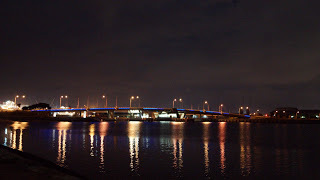 Port River - Photo ©Allen Tiller 2016
Port River - Photo ©Allen Tiller 2016
On the 27th of December 1910 the body of 38-year-old Glanville Greengrocer, William Finch Battye, was found floating face down in the Port River. Thought to be a suicide, an inquest into how and why he was dead was launched, an inquest that would uncover a far deeper tragedy.
Only a couple of years prior to his death, William had married Annie Campbell Othen on the 30th of September 1908 in Port Adelaide. Just seven months later, a baby boy was born, William George, on the 13th of May 1908 From all reports at the time, the couple seemed like they were in love and very happy, so why would William Senior kill himself?
The police arrived on Carlisle Street, Port Adelaide at 1am on the 27th of December 1910 as there were reports of a fire at the premises. First on the scene was Corporeal J.J. Maloney, who stated in court, that when he arrived, he saw the body of a woman and small child on the balcony of the premises, and was later informed by the fire chief, that they had removed her burnt corpse from the bed.
The Corporeal searched the house and found on the bed a broken aerated water bottle, the other half of which was laying on the floor. He found a tin of kerosene near the bed, but could not smell kerosene in the burnt bedding, nor in the clothing of the victims. There were a candle and a box of matches on the nightstand, but no spent matches in the room.
Further investigation revealed an expired fire insurance policy, and a life insurance policy for £250, which had been taken out on the December 8th, 1910. Also found was £9 in banknotes, two half-sovereigns, and 12/- in silver and a watch and chain, from which the constable concluded it was most probably that the deaths were not part of a robbery.
No evidence was found to determine the cause of the fire…
Annie and baby William had wounds on their heads but had suffocated to death in the fire, and their bodies had been severely burnt, but, William Snr’s body, pulled from the Port River, was also badly burnt.
After hearing evidence from the brother of Annie, and a brother of William, and also from Corporeal Mahoney, Dr W J Gething, the Battye family doctor gave his evidence.
In his conclusions, they stated that William Snr’s burn wounds were sufficient to have caused his death before he died of drowning in the river.
Dr Ramsey Smith, City Coroner delivered his verdict on whether the case was a murder-suicide, a robbery that went horrifically wrong, or something else. He stated:
“It would be evident that the three deaths were connected in some way, but the connection was purely a matter of conjecture. There were many possibilities, and, although in some cases a conjecture might amount to an almost moral certainty, it could not be said that that was so in the present case. To conclude on the evidence given that the husband murdered his wife and child, set fire to the house, and drowned himself would be legally unjustified. Verdicts must be founded on the facts of the evidence, and on the inferences, that could logically and legally be drawn from them. In the present case, there were many possibilities, and perhaps not a few probabilities. The fact that the husband's body was found in the water with marks of burning on it would alone make one hesitate even to suggest a theory of suicide. The verdict in the case.”
“Of Annie Campbell Battye was that she came to her death at Glanville on or about December 27, 1910, by suffocation, and the evidence did not show the cause of the fire. In the case of William.”“George Battye, the verdict was that he came to his death at Glanville on or about December 27, 1910, by suffocation by fire, and the evidence did not show the cause of the fire. ““In the case of William Finch Battye, the verdict was that he came to his death at Port Adelaide on or about December 28, 1910, by drowning and the evidence did not show how he came to be in the water.”
No-one will probably ever know what really happened to the seemingly loving Battye family leading up to their deaths, even the Coroner was unwilling to speculate, but whatever happened, they met a horrible fate, may they Rest In Peace…
Researched and written by Allen Tiller ©2015 www.allentiller.com.au
Bibliography
1910 'GLANVILLE TRAGEDY.', The Advertiser (Adelaide, SA: 1889 - 1931), 30 December, p. 6. , viewed 27 Jan 2015, http://nla.gov.au/nla.news-article5227602
1910 'SIMPLE TRAGEDY.', The South Eastern Times (Millicent, SA: 1906 - 1954), 30 December, p. 3. , viewed 27 Jan 2015, http://nla.gov.au/nla.news-article200002571
1910 'THE GLANVILLE TRAGEDY', The Express and Telegraph (Adelaide, SA: 1867 - 1922), 29 December, p. 1. (4 o'clock.), viewed 27 Jan 2015, http://nla.gov.au/nla.news-article210005434
South Australia Police Gazette Indexes, 1862-1947. Ridgehaven, South Australia: Gould Genealogy and History, 2009.
 Port River - Photo ©Allen Tiller 2016
Port River - Photo ©Allen Tiller 2016On the 27th of December 1910 the body of 38-year-old Glanville Greengrocer, William Finch Battye, was found floating face down in the Port River. Thought to be a suicide, an inquest into how and why he was dead was launched, an inquest that would uncover a far deeper tragedy.
Only a couple of years prior to his death, William had married Annie Campbell Othen on the 30th of September 1908 in Port Adelaide. Just seven months later, a baby boy was born, William George, on the 13th of May 1908 From all reports at the time, the couple seemed like they were in love and very happy, so why would William Senior kill himself?
The police arrived on Carlisle Street, Port Adelaide at 1am on the 27th of December 1910 as there were reports of a fire at the premises. First on the scene was Corporeal J.J. Maloney, who stated in court, that when he arrived, he saw the body of a woman and small child on the balcony of the premises, and was later informed by the fire chief, that they had removed her burnt corpse from the bed.
The Corporeal searched the house and found on the bed a broken aerated water bottle, the other half of which was laying on the floor. He found a tin of kerosene near the bed, but could not smell kerosene in the burnt bedding, nor in the clothing of the victims. There were a candle and a box of matches on the nightstand, but no spent matches in the room.
Further investigation revealed an expired fire insurance policy, and a life insurance policy for £250, which had been taken out on the December 8th, 1910. Also found was £9 in banknotes, two half-sovereigns, and 12/- in silver and a watch and chain, from which the constable concluded it was most probably that the deaths were not part of a robbery.
No evidence was found to determine the cause of the fire…
Annie and baby William had wounds on their heads but had suffocated to death in the fire, and their bodies had been severely burnt, but, William Snr’s body, pulled from the Port River, was also badly burnt.
After hearing evidence from the brother of Annie, and a brother of William, and also from Corporeal Mahoney, Dr W J Gething, the Battye family doctor gave his evidence.
In his conclusions, they stated that William Snr’s burn wounds were sufficient to have caused his death before he died of drowning in the river.
Dr Ramsey Smith, City Coroner delivered his verdict on whether the case was a murder-suicide, a robbery that went horrifically wrong, or something else. He stated:
“It would be evident that the three deaths were connected in some way, but the connection was purely a matter of conjecture. There were many possibilities, and, although in some cases a conjecture might amount to an almost moral certainty, it could not be said that that was so in the present case. To conclude on the evidence given that the husband murdered his wife and child, set fire to the house, and drowned himself would be legally unjustified. Verdicts must be founded on the facts of the evidence, and on the inferences, that could logically and legally be drawn from them. In the present case, there were many possibilities, and perhaps not a few probabilities. The fact that the husband's body was found in the water with marks of burning on it would alone make one hesitate even to suggest a theory of suicide. The verdict in the case.”
“Of Annie Campbell Battye was that she came to her death at Glanville on or about December 27, 1910, by suffocation, and the evidence did not show the cause of the fire. In the case of William.”“George Battye, the verdict was that he came to his death at Glanville on or about December 27, 1910, by suffocation by fire, and the evidence did not show the cause of the fire. ““In the case of William Finch Battye, the verdict was that he came to his death at Port Adelaide on or about December 28, 1910, by drowning and the evidence did not show how he came to be in the water.”
No-one will probably ever know what really happened to the seemingly loving Battye family leading up to their deaths, even the Coroner was unwilling to speculate, but whatever happened, they met a horrible fate, may they Rest In Peace…
Researched and written by Allen Tiller ©2015 www.allentiller.com.au
Bibliography
1910 'GLANVILLE TRAGEDY.', The Advertiser (Adelaide, SA: 1889 - 1931), 30 December, p. 6. , viewed 27 Jan 2015, http://nla.gov.au/nla.news-article5227602
1910 'SIMPLE TRAGEDY.', The South Eastern Times (Millicent, SA: 1906 - 1954), 30 December, p. 3. , viewed 27 Jan 2015, http://nla.gov.au/nla.news-article200002571
1910 'THE GLANVILLE TRAGEDY', The Express and Telegraph (Adelaide, SA: 1867 - 1922), 29 December, p. 1. (4 o'clock.), viewed 27 Jan 2015, http://nla.gov.au/nla.news-article210005434
South Australia Police Gazette Indexes, 1862-1947. Ridgehaven, South Australia: Gould Genealogy and History, 2009.
Published on December 25, 2018 00:30



